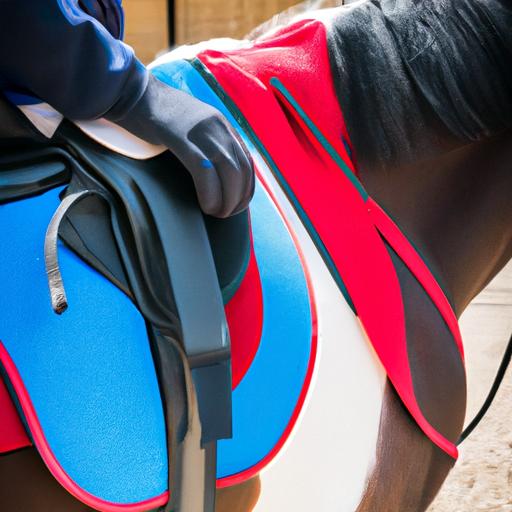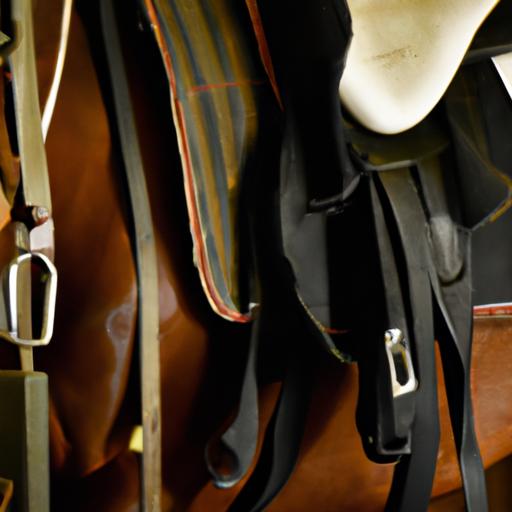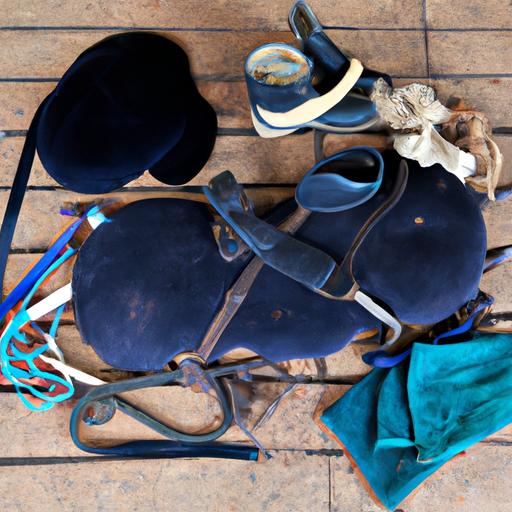Discover the essential horse riding equipment list for a safe and thrilling ride. Equip yourself with the right gear for a memorable equestrian experience.
Introduction
Are you ready to embark on an exhilarating horse riding adventure? Before you saddle up, it’s crucial to ensure you have the right horse riding equipment. Equipping yourself with the proper gear not only enhances your safety but also maximizes your enjoyment in the saddle. In this article, I will provide you with an overview of the essential horse riding equipment list, so you can ride with confidence and style.
Importance of having the right horse riding equipment
When it comes to horse riding, having the appropriate gear is more than just a matter of fashion. It directly impacts your safety and comfort during your equestrian endeavors. The right equipment not only protects you from potential injuries but also allows you to communicate effectively with your equine companion. It’s like having a reliable set of tools that enable you to fully immerse yourself in the experience.
Overview of the horse riding equipment list
Let’s dive into the horse riding equipment list that every rider should be familiar with. From head to toe, we’ll cover the essential gear that ensures a secure and enjoyable ride. We’ll explore items such as riding helmets, riding boots, riding breeches, safety equipment, horse tack, riding apparel, and accessories. Each piece of equipment serves a specific purpose, contributing to your safety, control, and overall riding experience.
Remember, investing in high-quality horse riding equipment is an investment in your safety and enjoyment. By choosing the right gear, you’ll be well-equipped to handle any situation that arises while riding. So, let’s explore the horse riding equipment list together and discover the must-have items that will make your equestrian journey a remarkable one.
Stay tuned for the upcoming sections, where we’ll delve into the details of each essential horse riding equipment category.
Essential Horse Riding Equipment

When it comes to horse riding, certain pieces of equipment are essential for both safety and comfort. Let’s explore some of the key items that every rider should have in their arsenal.
A. Riding Helmet
1. Importance of wearing a riding helmet
Your head is precious, and protecting it should be your utmost priority. Wearing a riding helmet significantly reduces the risk of head injuries in case of a fall or accident. Whether you’re a beginner or an experienced rider, accidents can happen anytime. A riding helmet acts as a protective shield, absorbing impact and safeguarding your head from potential trauma. It’s a small investment that can make a world of difference in preventing severe injuries or even saving your life.
2. Features to consider when choosing a riding helmet
Not all riding helmets are created equal. When selecting a riding helmet, consider the following factors:
- Safety Certifications: Look for helmets that meet approved safety standards, such as ASTM/SEI certification. These certifications ensure that the helmet has been rigorously tested and meets the necessary safety requirements.
- Proper Fit: A well-fitted helmet is crucial for optimal protection. Ensure the helmet snugly fits your head without being too tight or too loose. Adjust the straps and harness to securely hold the helmet in place.
- Ventilation: Riding can be physically demanding, and a well-ventilated helmet keeps your head cool and comfortable during long rides.
- Style and Design: While safety should always be paramount, it doesn’t mean you can’t look stylish. Choose a helmet that suits your personal taste with various styles and colors available in the market.
B. Riding Boots
1. Types of riding boots available
Your feet play a crucial role in maintaining stability and control while riding. Riding boots provide the necessary support, protection, and grip required for a safe and effective ride. There are several types of riding boots to consider, including:
- Paddock Boots: Ideal for everyday riding and stable work, paddock boots provide ankle support and flexibility.
- Field Boots: Often used for show jumping and dressage, field boots are taller and offer a more formal appearance. They provide increased support and a sleeker look.
- Riding Shoes: Designed for casual riding or lessons, riding shoes are comfortable and lightweight, offering a good level of grip and flexibility.
2. Factors to consider when selecting riding boots
When choosing riding boots, keep the following factors in mind:
- Fit and Comfort: Ensure the boots fit properly, providing ample support and comfort for your feet. Look for boots with cushioned insoles and breathable materials.
- Grip and Stability: Opt for boots with a treaded sole or specialized grip to prevent your feet from slipping in the stirrups.
- Durability: Riding boots should be made from sturdy materials that can withstand the wear and tear associated with equestrian activities.
C. Riding Breeches
1. Benefits of wearing riding breeches
Riding breeches are specifically designed to enhance your comfort and performance in the saddle. They offer a range of benefits, including:
- Improved Grip: Riding breeches are made from materials that provide grip and prevent slipping on the saddle.
- Flexibility and Mobility: With their stretchy fabric, riding breeches allow for freedom of movement, ensuring you can easily adjust your position and communicate with your horse.
- Protection: Breeches protect your legs from chafing and friction caused by the saddle and horse’s movement.
- Professional Appearance: Whether you’re riding for pleasure or participating in competitions, riding breeches give you a polished and professional look.
2. Different styles and materials for riding breeches
Riding breeches come in various styles and materials to suit different preferences and riding disciplines. Some popular options include:
- Full Seat Breeches: These breeches have a reinforced seat area, providing extra grip and stability in the saddle.
- Knee Patch Breeches: These breeches have an additional patch of material on the inner knee area, offering grip and protection.
- Material Options: Breeches can be made from synthetic materials, such as technical fabrics, or natural materials like cotton or leather. Choose a material that suits your riding style and climate.
By investing in the right riding helmet, boots, and breeches, you’ll set yourself up for a safe and comfortable ride. These essential horse riding equipment items are the foundation of a well-prepared equestrian. Stay tuned for the upcoming sections, where we’ll explore more crucial gear to enhance your riding experience.
Safety Equipment

When it comes to horse riding, safety should always be a top priority. Having the right safety equipment can significantly reduce the risk of injuries and ensure a secure riding experience. In this section, we will explore three crucial safety items every rider should consider: body protector, safety stirrups, and reflective gear.
A. Body Protector
1. Importance of wearing a body protector
A body protector, also known as a safety vest or body armor, is a crucial piece of equipment that provides protection to your torso, spine, and vital organs. It acts as a cushioning layer, absorbing impact in case of falls or accidents. Wearing a body protector significantly reduces the risk of severe injuries, particularly in high-impact areas such as the back and chest.
2. Factors to consider when choosing a body protector
When selecting a body protector, there are a few essential factors to consider. Firstly, ensure that it meets certified safety standards, such as those set by organizations like ASTM International or the British Equestrian Trade Association (BETA). These standards ensure that the body protector offers adequate protection and is manufactured to high-quality standards.
Additionally, consider the fit and adjustability of the body protector. It should fit snugly but not restrict your movement. Look for adjustable straps and closures to customize the fit to your body shape. Comfort is key, as you’ll be wearing the body protector for extended periods during your rides.
B. Safety Stirrups
1. Significance of safety stirrups
Safety stirrups are designed to prevent your foot from getting trapped in the stirrup in case of a fall or accident. They feature a mechanism that allows the foot to release easily, reducing the risk of being dragged by the horse. Safety stirrups provide an added layer of security and can be particularly beneficial for riders of all levels, including beginners.
2. Different types of safety stirrups available
There are various types of safety stirrups available on the market. Some popular options include peacock stirrups, which have a rubber band that releases the foot when pressure is applied, and bent-leg stirrups, which have a slight curve to allow for easy foot release. Additionally, there are also magnetic and quick-release stirrups that provide quick and reliable foot release in case of emergencies.
C. Reflective Gear
1. Importance of using reflective gear during horse riding
Reflective gear plays a vital role in ensuring your visibility, especially during low-light conditions or when riding near roads. When light hits reflective materials, they reflect it back, making you more visible to others, including motorists. By wearing reflective gear, you greatly reduce the risk of accidents and increase your safety while riding.
2. Types of reflective gear suitable for horse riders
There are several types of reflective gear suitable for horse riders. Reflective vests, bands, or strips that can be attached to your clothing or the horse’s tack are excellent options. Additionally, reflective leg bands or boots can help enhance your visibility. Choose gear that is comfortable, easy to attach, and provides maximum reflectivity to ensure optimal safety.
By investing in safety equipment like body protectors, safety stirrups, and reflective gear, you prioritize your safety and minimize the risks associated with horse riding. These items act as your protective shield and ensure that you can ride with confidence, knowing that you have taken the necessary precautions to stay safe on your equestrian adventures. Stay tuned for the upcoming sections, where we’ll explore other essential items on the horse riding equipment list.
Horse Tack
As we continue our exploration of the horse riding equipment list, let’s now focus on an integral category: horse tack. Horse tack refers to the equipment used to control and communicate with your horse while riding. It includes items such as saddles, bridles, girths, and stirrups. Let’s delve into the details of each essential horse tack item and understand their significance in enhancing your riding experience.
A. Saddle
The saddle is the centerpiece of horse tack, serving as the rider’s seat and providing stability and balance during the ride. There are various types of saddles available, each designed for specific riding disciplines or purposes. From all-purpose saddles to dressage saddles, western saddles to endurance saddles, the options seem endless. Understanding the different types of saddles and their purposes will help you choose the right one for your riding style.
When selecting a saddle, several factors should be considered. Your riding discipline, body type, and your horse’s conformation are crucial aspects to contemplate. The saddle should fit both you and your horse comfortably, allowing proper weight distribution and enabling clear communication with your equine partner. Additionally, the material, craftsmanship, and overall quality of the saddle play a significant role in its durability and longevity.
B. Bridle
A proper bridle is essential for horse riding, as it facilitates control and communication between you and your horse. The bridle consists of various components, including the headstall, bit, reins, and sometimes additional features like nosebands or browbands. Each part of the bridle has a specific function in directing your horse’s movements and responses.
Understanding the importance of a proper bridle is crucial for every rider. It allows you to guide your horse effectively, directing them through cues transmitted through the reins and bit. A well-fitted bridle ensures comfort for your horse, promoting a harmonious partnership. Familiarize yourself with the different parts of a bridle, their functions, and the various options available to choose the right bridle for your horse’s needs.
C. Girth and Stirrups
While often overlooked, the girth and stirrups are vital components of horse tack that directly impact your safety and stability in the saddle. The girth is the strap that secures the saddle on your horse’s belly, keeping it in place during your ride. A secure girth prevents the saddle from slipping or rotating, ensuring your balance and preventing discomfort for your horse.
Properly adjusted stirrups are crucial for maintaining balance and stability while riding. They provide a reliable platform for your feet, allowing you to maintain a secure position and distribute your weight evenly. Adjusting the stirrups to the correct length ensures a comfortable riding experience and reduces the risk of accidents or injuries.
When choosing a girth and stirrups, factors such as material, size, and adjustability should be considered. Comfort, durability, and compatibility with your saddle and riding style are essential aspects to evaluate when making your selection.
Stay tuned for the upcoming sections, where we’ll explore the other categories of horse riding equipment in detail.
Riding Apparel and Accessories
When it comes to horse riding, your attire goes beyond just looking stylish—it plays a crucial role in your comfort, safety, and performance. The right riding apparel and accessories can enhance your grip, protect you from the elements, and ensure a seamless connection with your horse. In this section, we will explore three key components of riding apparel and accessories: riding gloves, riding jackets and vests, and riding whips and crops.
Riding Gloves
1. Benefits of wearing riding gloves
Why should you consider wearing riding gloves? Well, apart from adding a touch of elegance to your equestrian attire, riding gloves provide numerous advantages. They offer a secure grip on the reins, ensuring better control and communication with your horse. Additionally, gloves protect your hands from blisters, calluses, and friction, especially during long rides. They also provide insulation in colder weather, keeping your hands warm and nimble.
2. Factors to consider when selecting riding gloves
When choosing riding gloves, consider the following factors. Firstly, opt for gloves made from high-quality materials that offer durability and flexibility, such as leather or synthetic materials. Secondly, ensure a proper fit that allows for ease of movement and a snug grip. Lastly, consider the level of breathability and moisture-wicking properties to keep your hands comfortable during intense riding sessions.
Riding Jackets and Vests
1. Importance of suitable riding jackets and vests
Riding jackets and vests not only protect you from unpredictable weather conditions but also provide an additional layer of safety. They shield you from wind, rain, and cold temperatures, keeping you comfortable and focused on your ride. Additionally, riding jackets and vests often feature tailored designs that allow for freedom of movement, ensuring that your movements are not restricted while in the saddle.
2. Different materials and styles available
When selecting riding jackets and vests, consider the materials and styles that best suit your needs. Look for jackets and vests made from breathable, waterproof, and wind-resistant fabrics to keep you comfortable in various weather conditions. Additionally, explore different styles, such as lightweight jackets, insulated vests, or performance-based designs, to find the perfect fit for your riding style and preferences.
Riding Whips and Crops
1. Purpose and proper use of riding whips and crops
Riding whips and crops are aids used to communicate effectively with your horse and refine your cues. They serve as an extension of your arm, allowing for subtle yet clear signals to guide your horse’s movements. However, it’s important to use them responsibly and ethically, considering the comfort and well-being of the horse. Proper training and understanding of their purpose are essential to ensure their appropriate use.
2. Factors to consider when choosing a riding whip or crop
When selecting a riding whip or crop, consider factors such as length, weight, and flexibility. The length should be proportionate to your height and riding style, allowing for comfortable reach and proper cues. The weight and flexibility should match your preferences and the level of responsiveness you desire from your horse. It’s crucial to prioritize the comfort and welfare of your horse, using these aids as tools for guidance rather than punishment.
Stay tuned as we continue our exploration of the horse riding equipment list. In the upcoming sections, we’ll delve into the details of other essential gear that will elevate your riding experience.


